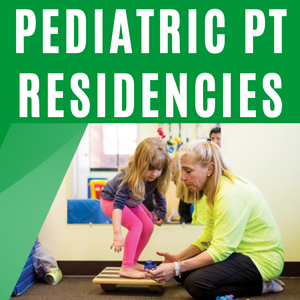Back
Gross Motor Function in a Preschool Aged Child with Spinal Muscular Atrophy Treated with Nusinersen, a Case Report
.jpg)
Susan Z. Lastra, DPT MPA
Senior Pediatric Physical Therapist
Hackensack University Medical Center
Rutherford, New Jersey, United States
Background & Purpose: Spinal muscular atrophy (SMA) is a genetic, neurodegenerative disease with motor neuron demise culminating in progressive weakness and functional decline. New pharmacological therapies are revolutionizing treatment of the disease prior to motor decline. The purpose of this case report is to provide a clinical example of gross motor (GM) function in a child with SMA who received intrathecal nusinersen intervention, and to provide prognostic insight for physical therapists to modernize their plan of care.
Case Description: A four-year-old child with asymptomatic SMA with 3 copies of the SMN2 gene, treated with nusinersen since infancy, received two episodes of physical therapy (PT) over a 20-month span from ages 29-49 months. PT interventions were devised based on clinical findings after initial evaluation, parent concerns and goals, and adjusted over time relative to patient needs and progress. GM skill testing was performed at varying intervals using the Development Assessment for Young Children 2nd edition (DAYC-2) and/or the Hawaii Early Learning Profile (HELP).
Outcomes: During the treatment period the child displayed low muscle tone, mild weakness, and joint hypermobility. Initial GM assessment with the HELP indicated GM performance below age level; however successive HELP scores over the 20-month period demonstrated steady improvement in skill development with GM performance increasing to match and then surpass the child’s age. During the second episode of PT care, gross motor testing using the DAYC-2 calculated the child’s GM skill level in the “average” range between the 26th and 66th percentiles indicating typical performance. At the end of PT treatment, the child was capable of independent community level participation in school and recreation.
Discussion: With the advent of new medical therapies, a child with presumed SMA type 2 treated with nusinersen may have potential for typical GM function and independent community level participation despite underlying issues of low muscle tone, weakness, and postural deviations inherent to SMA. For this new patient phenotype, the PT prognosis and plan of care need to evolve from a traditional maintenance focus to one which proactively pursues goals of timely acquisition of GM skills.
Case Description: A four-year-old child with asymptomatic SMA with 3 copies of the SMN2 gene, treated with nusinersen since infancy, received two episodes of physical therapy (PT) over a 20-month span from ages 29-49 months. PT interventions were devised based on clinical findings after initial evaluation, parent concerns and goals, and adjusted over time relative to patient needs and progress. GM skill testing was performed at varying intervals using the Development Assessment for Young Children 2nd edition (DAYC-2) and/or the Hawaii Early Learning Profile (HELP).
Outcomes: During the treatment period the child displayed low muscle tone, mild weakness, and joint hypermobility. Initial GM assessment with the HELP indicated GM performance below age level; however successive HELP scores over the 20-month period demonstrated steady improvement in skill development with GM performance increasing to match and then surpass the child’s age. During the second episode of PT care, gross motor testing using the DAYC-2 calculated the child’s GM skill level in the “average” range between the 26th and 66th percentiles indicating typical performance. At the end of PT treatment, the child was capable of independent community level participation in school and recreation.
Discussion: With the advent of new medical therapies, a child with presumed SMA type 2 treated with nusinersen may have potential for typical GM function and independent community level participation despite underlying issues of low muscle tone, weakness, and postural deviations inherent to SMA. For this new patient phenotype, the PT prognosis and plan of care need to evolve from a traditional maintenance focus to one which proactively pursues goals of timely acquisition of GM skills.

.png)
.jpg)
.png)
.png)
.png)
.png)
